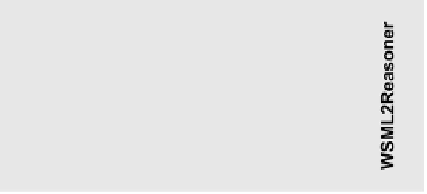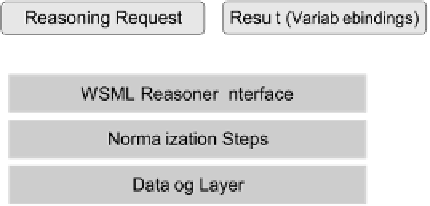Information Technology Reference
In-Depth Information
Fig. 10.1.
Architecture of the WSML2Reasoner framework
symbol map, which takes care of translating the WSML-specific naming con-
vention, in particular that of IRIs, into symbol names that are actually valid
for a specific tool.
The framework is open source and can be downloaded from
http://dev1.
deri.at/wsml2reasoner/
. As indicated in Fig. 10.1, MINS
4
and KAON2
5
are
actively supported reasoners and can also be downloaded from the respective
project Web sites.
10.1.3 Online Validation and Reasoning
The latter two online services provide, essentially, a simple interface on top of
the components described above. Making these components available using a
standard HTML interface addresses the basic needs to begin working with the
Web Service Modeling Language. Instead of the need to download and install
some software these services are immediately available to the interested user.
The
WSML Validator
6
is an online service that allows one to check a
WSML specification for validity. For syntactic mistakes, it provides basic hints
for fixes and moreover it also checks the specification according to the expres-
sivity level (i.e. the WSML variant used). Additionally, it provides detailed
explanations when in case a specification does not adhere to a variant. This
can be particulary useful for “debugging” logical expressions.
Another online service provided is the WSML reasoning service.
7
.This
service supports query answering for the WSML variants Core, Flight, and
Rule. Figure 10.2 shows the form fields, with the input ontology and the query
in the upper frame. The lower frame shows the query result. In this example,
4
http://dev1.deri.at/mins/
.
5
http://kaon2.semanticweb.org/
.
6
http://tools.deri.org/wsml/validator/
.
7
http://tools.deri.org/wsml/rule-reasoner/
.
























Search WWH ::

Custom Search